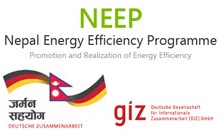In industrial process, heat is generated during fuel combustion or chemical reaction. The heat that is not in use is waste heat. Sources of waste heat could be hot combustion gases discharged to the atmosphere, heated products exiting industrial processes, and heat transfer from hot equipment surfaces. It is not an easy task to quantify exact value of industrial waste heat but studies have estimated that 20 to 40% of industrial energy consumption is discharged as waste heat.
Though some waste heat losses from industrial processes are inevitable, facilities can reduce these losses by improving equipment efficiency or installing waste heat recovery technologies. Waste heat recovery entails capturing and reusing the waste heat in industrial processes for heating or for generating mechanical or electrical work. Example uses for waste heat include generating electricity, preheating combustion air, preheating furnace loads, absorption cooling, and space heating.
Factors Affecting Waste Heat Recovery
Evaluating the feasibility of waste heat recovery requires characterizing the waste heat source and the stream to which the heat will be transferred. Two important waste stream parameters that must be determined include:
- heat quantity,
- heat temperature/quality,
These parameters allow for analysis of the quality and quantity of the stream and also provide insight into possible materials/design limitations. Nevertheless corrosion of heat transfer media is of considerable concern in waste heat recovery, even when the quality and quantity of the stream is acceptable.
Heat Losses –Quality
Depending upon the type of process, waste heat can be rejected at virtually any temperature from that of chilled cooling water to high temperature waste gases from an industrial furnace or kiln. Usually higher the temperature, higher the quality and more cost effective is the heat recovery. In any study of waste heat recovery, it is absolutely necessary that there should be some use for the recovered heat. Typical examples of use would be preheating of combustion air, space heating, or pre-heating boiler feed water or process water. With high temperature heat recovery, a cascade system of waste heat recovery may be practiced to ensure that the maximum amount of heat is recovered at the highest potential. An example of this technique of waste heat recovery would be where the high temperature stage was used for air pre-heating and the low temperature stage used for process feed water heating or steam raising.
Heat Losses – Quantity
In a heat recovery situation it is essential to know the amount of heat recoverable and also how it can be used. An example of the availability of waste heat from a re-heating furnace is given below: In a re-heating furnace, the exhaust gases are leaving the furnace at 600oC at the rate of 40000m3/hour. The total heat recoverable at 180oC final exhaust can be calculated as
Q = V x ρ x Cp x ΔT
Q is the heat content in kCal
V is the flow rate of flue gas in m3/hr
ρ is density of the flue gas in kg/m3
ΔT is the temperature difference in oC
Cp (Specific heat of flue gas) = 0.24 kCal/kg/oC
Heat available (Q) = 40000 x 0.405 x 0.24 x (600-180) = 1,632,960 kCal/hr
By installing a recuperator this heat can be recovered to pre-heat the combustion air. The fuel savings would be 19% (@ 1% fuel reduction for every 22oC reduction in temperature of flue gas.



